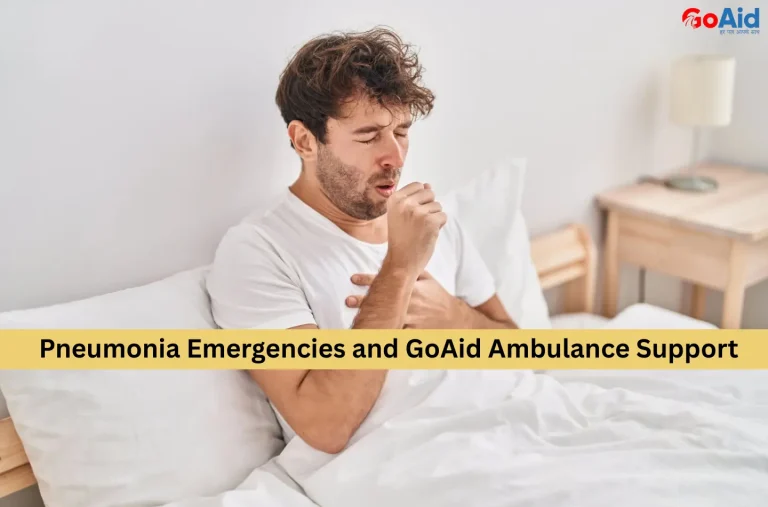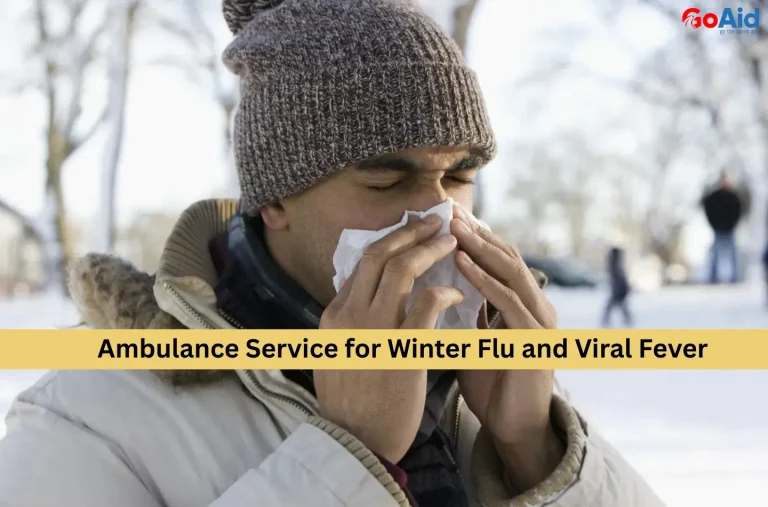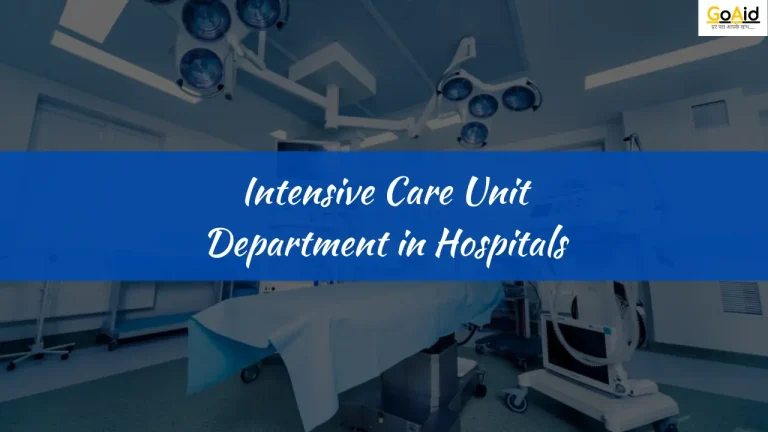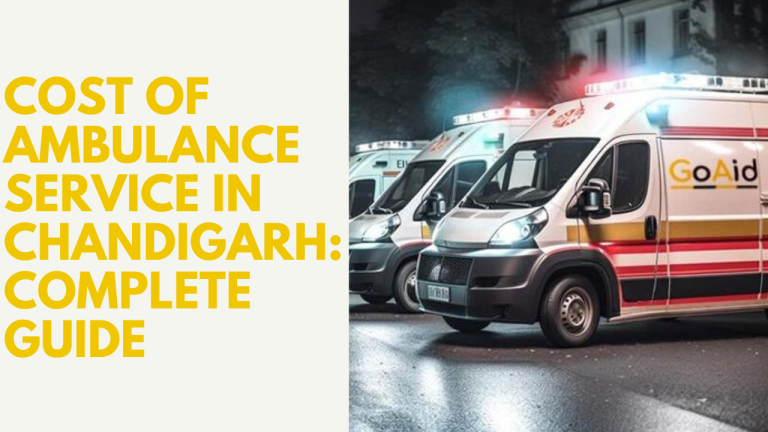For patients with chronic illnesses, limited mobility, or frequent medical needs, continuous home care becomes a lifeline. Many families struggle with sudden health fluctuations, late-night emergencies, and repeated hospital visits. This makes reliable round-the-clock support essential. A system that ensures medical attention at home while staying emergency-ready can drastically improve patient safety and comfort.
This is why, in this blog we have provided you with all the details about why continuous home care matters, how home nursing reduces hospital dependency, the role of on-call ambulance support, medical conditions that need 24├Ś7 monitoring, benefits of integrated care, and how rapid transfers improve outcomes. Do you want to know all this information in detail? then read our blog to the end.
So, lets start
Why Do Continuous Home Care Matter for Critical Patients?
Continuous home care is essential for critical patients because it ensures ongoing medical supervision, timely interventions, and emotional comfort within the home environment. Patients with chronic illnesses, post-surgery conditions, neurological disorders, or age-related complications often require round-the-clock monitoring.┬Ā
A 24├Ś7 Medical Assistance system helps track vitals, symptoms, and medication schedules without disruption. When paired with Home Nursing With Ambulance support, emergency situations are handled instantly. This reduces life-threatening delays.
Instead of waiting for a hospital team to respond, patients receive immediate on-site care and quick transfers if their condition worsens. Continuous Home Healthcare Support also reduces stress for families, ensures better hygiene, lowers infection risk, and improves long-term recovery outcomes.
For bedridden or high-risk patients, an integrated combination of nurses, caregivers, and Emergency-Ready Home Care becomes a life-saving advantage. This approach creates a safety net that protects the patient every hour, every day.
How Does Home Nursing Reduce Hospital Visits?
Home nursing significantly reduces unnecessary hospital visits by offering professional medical care directly at the patientŌĆÖs home, especially for chronic, elderly, or post-surgery patients.
1. Regular Monitoring of Vitals
Nurses track blood pressure, oxygen, heart rate, and temperature regularly. This allows early detection of complications before they require hospitalization.
2. Timely Medication Administration
Missed doses often lead to emergencies. Nursing staff ensure accurate and timely medicine intake, preventing sudden deterioration.
3. Infection Prevention at Home
Hospitals carry higher infection risks. Home nurses maintain hygiene, wound care, and safe medical practices to keep patients healthier.
4. Immediate Response to Minor Symptoms
Many small issues worsen due to delayed attention. Nurses identify warning signs early and treat them before hospital intervention becomes necessary.
5. Effective Post-Surgery Care
Recovery after surgery needs proper dressing, mobility support, and pain management, which home nurses handle safely. This reduces return visits.
6. Support for Long-Term Illnesses
Patients with diabetes, hypertension, respiratory issues, or paralysis benefit from daily oversight, preventing sudden emergency trips to hospitals.
7. Safe Mobility and Physiotherapy Assistance
Nurses help with exercises and movement. This reduces complications caused by immobility and decreases the need for hospital-based physiotherapy.
8. Professional Wound and Catheter Care
Improper wound or catheter management can lead to serious infections. Home nursing avoids these complications through expert handling.
9. Emotional & Mental Comfort for Patients
Being at home reduces anxiety and stress. This helps patients heal faster and avoid frequent hospital consultations caused by mental distress.
10. Uninterrupted Coordination With Emergency Ambulance Support
With Home Nursing With Ambulance integration, any sudden emergency is managed immediately at home, preventing the need for rushed hospital visits or delays.
Role of On-Call Ambulance Support for Emergencies
Having on-call ambulance support ensures that patients receive instant medical attention when their condition suddenly worsens. It creates a safety net for families who rely on 24├Ś7 Medical Assistance and Emergency-Ready Home Care.
1. Immediate Transfer During Sudden Deterioration
When a patientŌĆÖs condition turns critical, quick ambulance access ensures rapid hospital transfer, preventing delays that could worsen outcomes.
2. Essential for Heart and Stroke Emergencies
Cardiac arrest and stroke require urgent transport. On-call ambulances reduce the response time and improve survival chances significantly.
3. Supports Home-Based Critical Care Patients
Patients on oxygen, ventilators, or long-term treatment may need emergency evacuation at any moment, which on-call services handle efficiently.
4. Helps Manage Night-Time Emergencies
Most crises happen unexpectedly at night. A ready ambulance ensures families arenŌĆÖt left searching for help during off-hours.
5. Safe Transport for High-Risk Elderly Patients
Elderly patients often face sudden dips in vitals. Fast ambulance intervention allows safe and monitored hospital transfers.
6. Reduces Panic and Confusion During Crises
Knowing an ambulance is just one call away gives families confidence and helps them act quickly without panic.
7. Ensures Professional Pre-Hospital Treatment
On-call ambulances provide oxygen, first aid, and stabilizing care before reaching the hospital. This improves overall emergency outcomes.
Medical Conditions That Need 24├Ś7 Monitoring
Certain critical illnesses require continuous observation because symptoms can worsen rapidly. With Home Healthcare Support and Continuous Patient Monitoring, patients remain safer and more stable.
1. Cardiac and Heart Patients
Heart patients may experience irregular heartbeat, chest pain, or sudden collapse. This requires round-the-clock monitoring and fast transport during emergencies.
2. Stroke Recovery Patients
Post-stroke patients face risks of secondary strokes or neurological complications. This makes 24├Ś7 supervision essential for recovery and prevention.
3. Respiratory and Oxygen-Dependent Patients
Patients with COPD, asthma, or lung infections need constant oxygen checks and immediate support if breathing becomes difficult.
4. Post-Surgery Recovery Patients
Complications such as bleeding, infection, or mobility issues can arise anytime, needing constant nursing assistance.
5. Elderly Patients With Chronic Illnesses
Age-related issues like dementia, diabetes, and hypertension require continuous observation to manage fluctuations and prevent emergencies.
6. Neurological and Seizure-Prone Patients
Seizures or sudden behavioral changes can happen unpredictably. This requires quick intervention and ambulance backup.
7. Patients With Severe Infections or Sepsis Risk
Infections can worsen rapidly into critical conditions. Continuous monitoring supports early detection and urgent medical action.
Benefits of Combining Home Care & Emergency Transport
Combining continuous home nursing with fast, on-call ambulance access creates a uninterrupted medical safety net. This integrated approach ensures stability, rapid intervention, and better overall outcomes for patients with chronic, critical, or high-risk medical needs.
1. Faster Response During Sudden Deterioration
An integrated system ensures that the moment a patientŌĆÖs vitals drop or symptoms worsen, immediate ambulance dispatch is triggered. This drastically cuts response time and increases the chances of stabilizing the patient before complications escalate.
2. Smooth Coordination Between Nurses and Paramedics
Home nurses can share real-time vitals and medical updates with the ambulance team even before arrival. This coordination allows paramedics to prepare necessary equipment, boosting accuracy and care quality during emergency transfers.
3. Reduced Risk During High-Risk Transfers
Patients requiring oxygen, ventilator support, or IV medications are transferred with higher safety. Since the home team coordinates with ambulance paramedics, the transition becomes smoother. This minimizes medical risks.
4. Continuity of Care from Home to Hospital
A connected system ensures the same patient details, vitals, and treatment updates are communicated to hospital staff. This continuity avoids delays, medical errors, and confusion during handover.
5. Better Outcomes for Chronic Patients
Patients with long-term illnesses like COPD, heart disease, or neurological issues benefit from consistent monitoring. Emergency transport built into the system ensures they get instant hospital access when conditions worsen.
6. Peace of Mind for Families
Families feel secure knowing that medical support is available around the clock. It doesnŌĆÖt matter if it’s monitoring at home or an immediate ambulance call, loved ones remain protected at every stage.
7. Prevents Medical Complications from Delays
Emergencies like seizures, breathlessness, or chest pain require immediate care. When home nurses and ambulance teams collaborate, delays are eliminated. This reduces the chance of serious complications.
8. Ideal for Bedridden and Post-Surgery Patients
Patients recovering from major surgeries or confined to bed require constant attention. With integrated ambulance backup, they receive safe and quick transportation during unexpected emergencies.
9. Ensures Correct Medical Intervention in Transit
Ambulance paramedics receive prior medical data from home nurses. This enables them to start accurate, pre-hospital treatment. This improves survival chances for stroke, cardiac issues, and respiratory problems.
10. Creates a Complete Medical Ecosystem at Home
Together, home care and emergency transport recreate hospital-level readiness within the home environment. Patients receive timely monitoring, immediate stabilization, and safe hospital transfers whenever required.
How Do Rapid Transfers Improve Patient Outcomes?
Rapid medical transfers play a life-saving role for patients experiencing sudden health deterioration, especially those with chronic or high-risk conditions. The quicker a patient reaches the right medical facility, the higher the chances of stabilizing critical symptoms and preventing long-term complications.
Timely ambulance support helps manage emergencies like cardiac arrest, stroke, respiratory distress, or severe infections within the ŌĆ£golden hour,ŌĆØ when immediate intervention matters most.
Rapid transfers also reduce delays in diagnosis and treatment. This ensures doctors receive real-time vitals and updates from paramedics en route. This smooth communication helps hospitals prepare in advance, speeding up treatment upon arrival.
For bedridden, elderly, and post-surgery patients, quick transfers prevent complications that may arise during transport without proper medical supervision.
With GoAidŌĆÖs emergency-ready ambulances and trained paramedics, patients receive accurate pre-hospital care. This stabilizes them before reaching the hospital. Ultimately, rapid medical transfers directly improve recovery rates, survival chances, and overall patient outcomes.
Advanced Home Nursing Services Offered by GoAid
GoAid provides advanced home nursing services designed to support patients who require consistent medical supervision, specialized care, and hospital-level monitoring at home. Their trained nurses care for patients with chronic illnesses, post-surgery needs, elderly health conditions, neurological issues, and long-term rehabilitation requirements.
The service includes medication management, wound dressing, IV/IM injections, catheter care, ventilator and oxygen support, and vital monitoring using modern medical equipment. GoAid nurses also keep real-time health records. This allows early detection of complications and timely medical intervention.┬Ā
They provide personalized care plans based on a patientŌĆÖs condition. This ensures physical comfort, emotional support, and maximum safety. For completely bedridden or critical patients, nurses assist with hygiene, mobility, and nutrition management.
Paired with GoAidŌĆÖs 24├Ś7 ambulance backup, the home nursing system becomes even more powerful, ensuring that in emergencies, patients can be transferred instantly with all vital information shared in advance. This makes GoAid a trusted partner in integrated home-based healthcare.
How Nurses Benefit From 24├Ś7 Medical Support
Continuous medical support empowers home nurses with instant access to clinical assistance, emergency backup, and coordinated patient care. It strengthens decision-making, enhances safety, and allows nurses to deliver more confident, accurate, and timely care for critical or long-term patients.
1. Improved Decision-Making in Emergencies
Nurses can immediately consult medical experts during sudden complications. This helps them take the right steps without delay. This reduces errors and ensures the patient receives accurate intervention at the right moment.
2. Reduced Workload Stress
With round-the-clock medical support and ambulance backup, nurses donŌĆÖt feel pressured to handle every situation alone. This lowers stress levels and improves their overall performance and confidence.
3. Faster Escalation of Critical Cases
If a patientŌĆÖs condition worsens, nurses can instantly escalate care through on-call doctors or ambulance response teams. This ensures quick action and improves patient safety significantly.
4. Better Coordination With Hospitals
24├Ś7 medical support enables nurses to share vitals, symptoms, and updates with hospitals in advance. This coordination helps prepare the hospital team before the patient arrives.
5. Access to Emergency Equipment Anytime
Medical backup ensures nurses always have access to advanced tools, oxygen support, or specialized equipment whenever required. This makes home care more effective and hospital-like.
6. Reduced Risk of Clinical Mistakes
With expert guidance available at all times, nurses can cross-check doubts and treatment steps. This minimizes risk and improves the accuracy of home care procedures.
7. Stronger Patient Trust
Families feel more confident when they know the nurse is supported by a 24├Ś7 medical system. This trust strengthens cooperation between caregivers and the patientŌĆÖs family.
8. Improved Handling of High-Risk Patients
Nurses dealing with elderly, bedridden, post-surgery, or ICU-level patients get crucial support during complications. This makes managing high-risk cases safer and more controlled.
9. Better Documentation & Monitoring
Continuous support allows nurses to maintain real-time records and get guidance on interpreting vitals, symptoms, and treatment progress. This boosts overall care quality.
10. Enhanced Professional Growth
Working with a 24├Ś7 medically supported system improves a nurseŌĆÖs clinical skills, emergency experience, and confidence, contributing to long-term professional development.
Impact of All-Time Monitoring on PatientŌĆÖs Comfort & Recovery
Continuous monitoring provides patients with medical security, emotional reassurance, and immediate intervention when needed. It helps prevent complications, improves treatment precision, and significantly speeds up recovery while making home care more comfortable and safe.
1. Early Detection of Complications
All-time monitoring allows nurses to spot small changes in vitals before they become serious. This ensures timely action and prevents major health setbacks.
2. Better Symptom Management
Patients struggling with chronic pain, breathing issues, or weakness receive quick adjustments in care. This improves comfort and reduces unnecessary suffering at home.
3. Reduced Hospital Readmissions
With continuous tracking, nurses can prevent emergency situations that often lead to rehospitalization. This helps patients recover peacefully without frequent hospital visits.
4. Improved Emotional Comfort
Knowing someone is constantly monitoring their condition gives patients immense psychological relief. This reduces anxiety and supports faster healing.
5. Faster Response During Sudden Deterioration
If a patientŌĆÖs health drops suddenly, continuous monitoring ensures immediate escalation to emergency teams. Quick action directly supports better recovery outcomes.
6. Personalized Care Adjustments
Real-time data helps nurses adjust medication timings, diet plans, mobility routines, and treatment strategies. This customization improves comfort and speeds recovery.
7. Stronger Overall Recovery Outcomes
Continuous monitoring maintains medical stability, prevents unnoticed declines, and ensures accurate treatment, resulting in quicker and more successful recovery.
How to Choose the Right Home Nursing + Ambulance System?
Choosing the right home nursing + ambulance support system requires evaluating service reliability, medical expertise, emergency readiness, and real-time monitoring capabilities. Look for trained nurses, on-call doctors, advanced medical equipment, and 24├Ś7 emergency ambulance backup to ensure complete safety for critical or long-term patients.┬Ā
Check whether the service provides rapid transfers, continuous updates, and personalized care plans. A trusted provider should also offer transparent pricing, verified staff, and quick response times.
GoAid provides a fully integrated Home Nursing + Ambulance system designed to deliver round-the-clock care, emergency transport, and professional medical support for patients requiring continuous assistance.
Conclusion
In conclusion, we have provided all the information about choosing the best Home Nursing + Ambulance Support System for safe, reliable, and continuous patient care. From 24├Ś7 monitoring to rapid emergency transfers and professional medical assistance, an integrated setup ensures better outcomes, fewer hospital visits, and timely interventions.
GoAidŌĆÖs combined home nursing and ambulance services offer round-the-clock support. This makes it easier for families to manage critical patients with confidence and complete medical reliability.
FAQs
Q1: What is the benefit of combining home nursing with ambulance support?
A: Combining home nursing with emergency-ready ambulance backup ensures continuous monitoring, quick interventions, and fast transfers during complications. This integrated system improves patient safety, reduces hospital visits, and provides uninterrupted home healthcare support using services like GoAid Ambulance Service.
Q2: How does a 24├Ś7 home healthcare support system help critical patients?
A: A 24├Ś7 home healthcare support system offers continuous patient monitoring, timely medication, and instant emergency response. It ensures stable vitals, reduces medical risks, and enables quick ambulance-assisted transfers when required. This makes home care safe for vulnerable patients.
Q3: What features should I look for in a Home Nursing + Ambulance service?
A: Look for trained nurses, emergency-ready ambulances, real-time updates, continuous patient monitoring, and rapid response times. An integrated model like GoAid provides reliable home care with fast transport for critical conditions and sudden emergencies.
Q4: Can home nursing reduce frequent hospital visits for long-term patients?
A: Yes, continuous home nursing helps manage daily care, vitals tracking, medication, and symptom control at home. With ambulance support on standby, patients avoid unnecessary hospital trips while still staying medically safe and well-monitored.
Q5: Why is rapid ambulance transfer important in home-based critical care?
A: Rapid ambulance transfer is crucial when a patientŌĆÖs condition worsens unexpectedly. It ensures immediate access to hospital-level treatment, prevents life-threatening delays, and supports better outcomes through coordinated care with services like GoAid Ambulance Service.
















